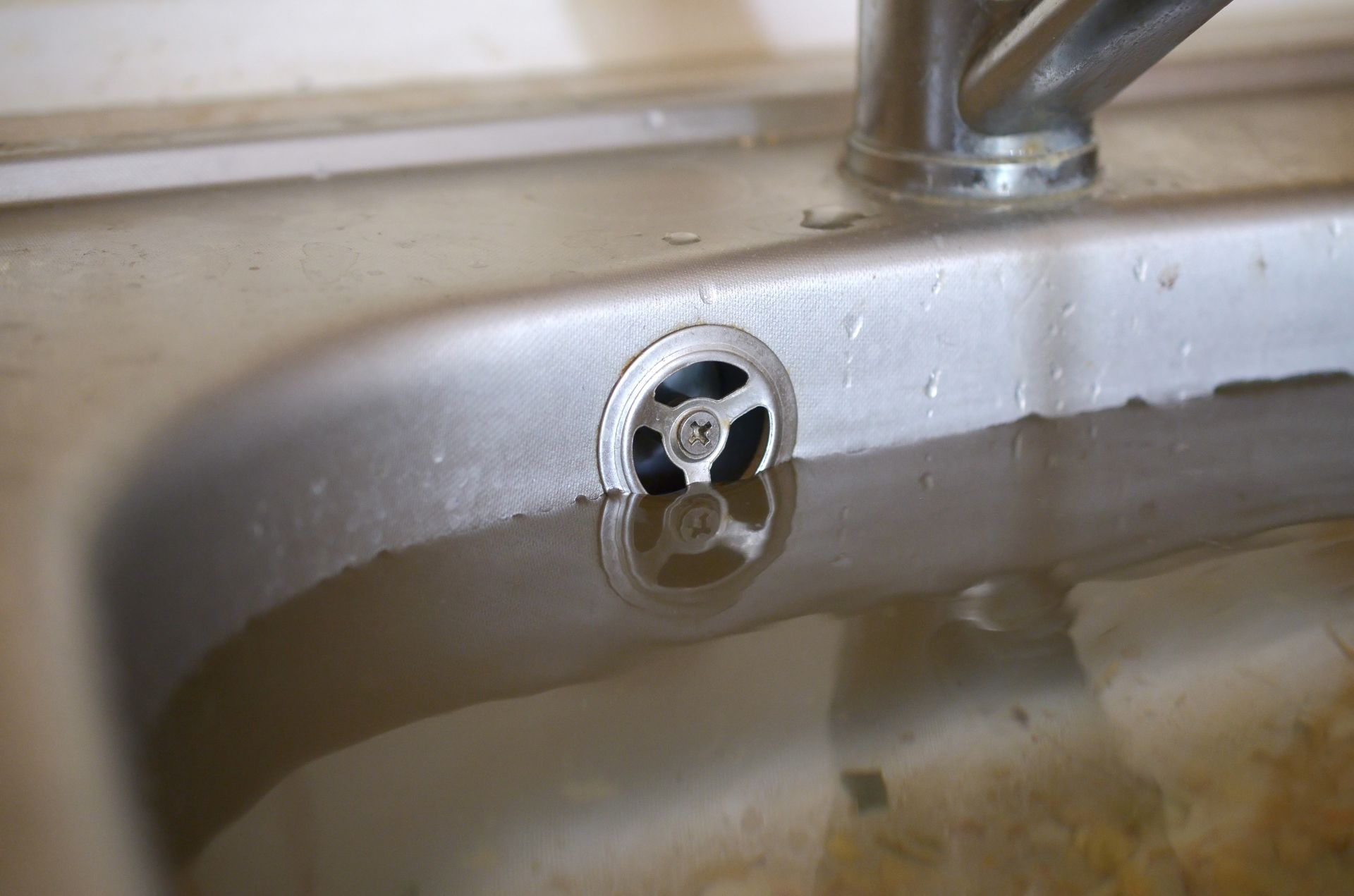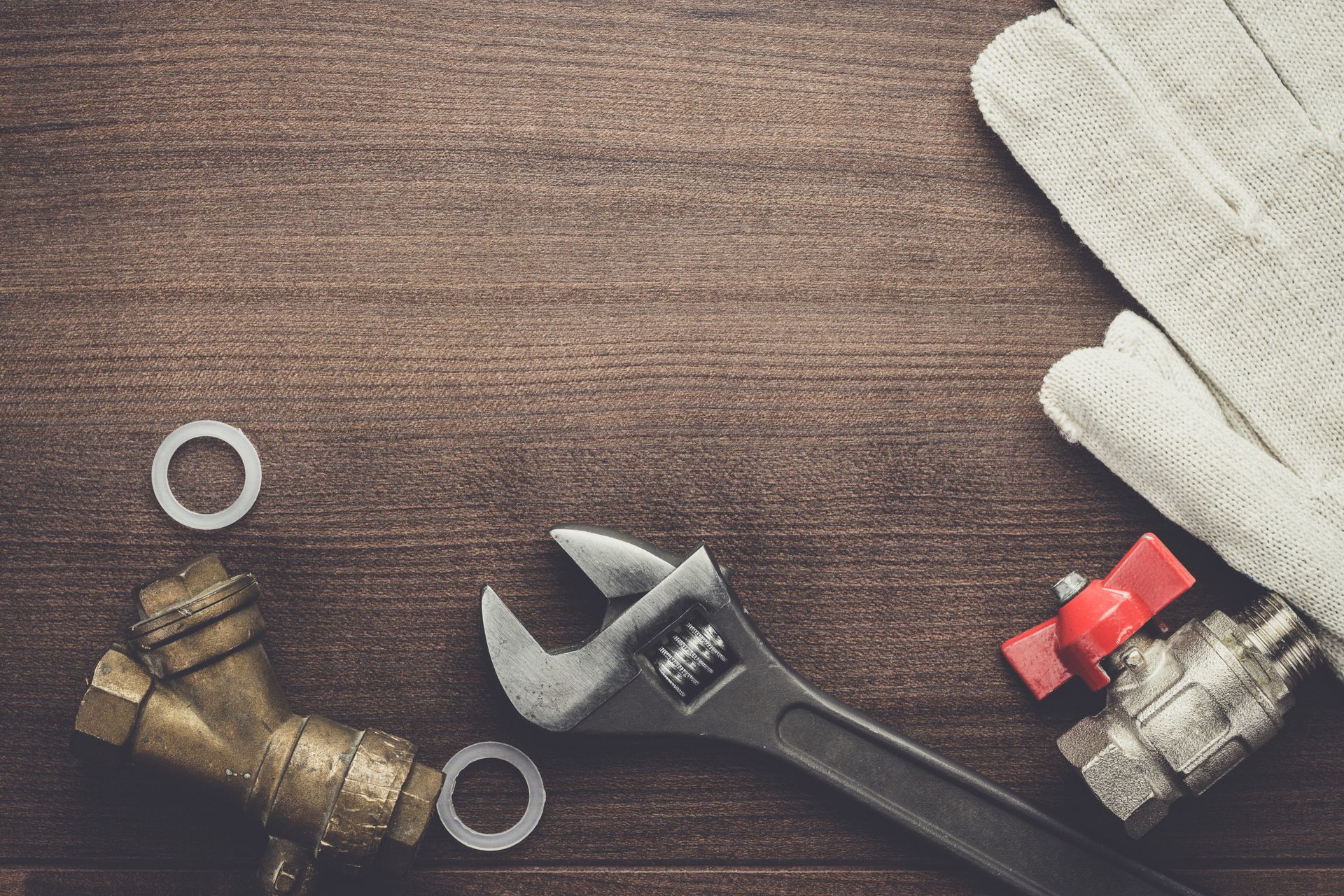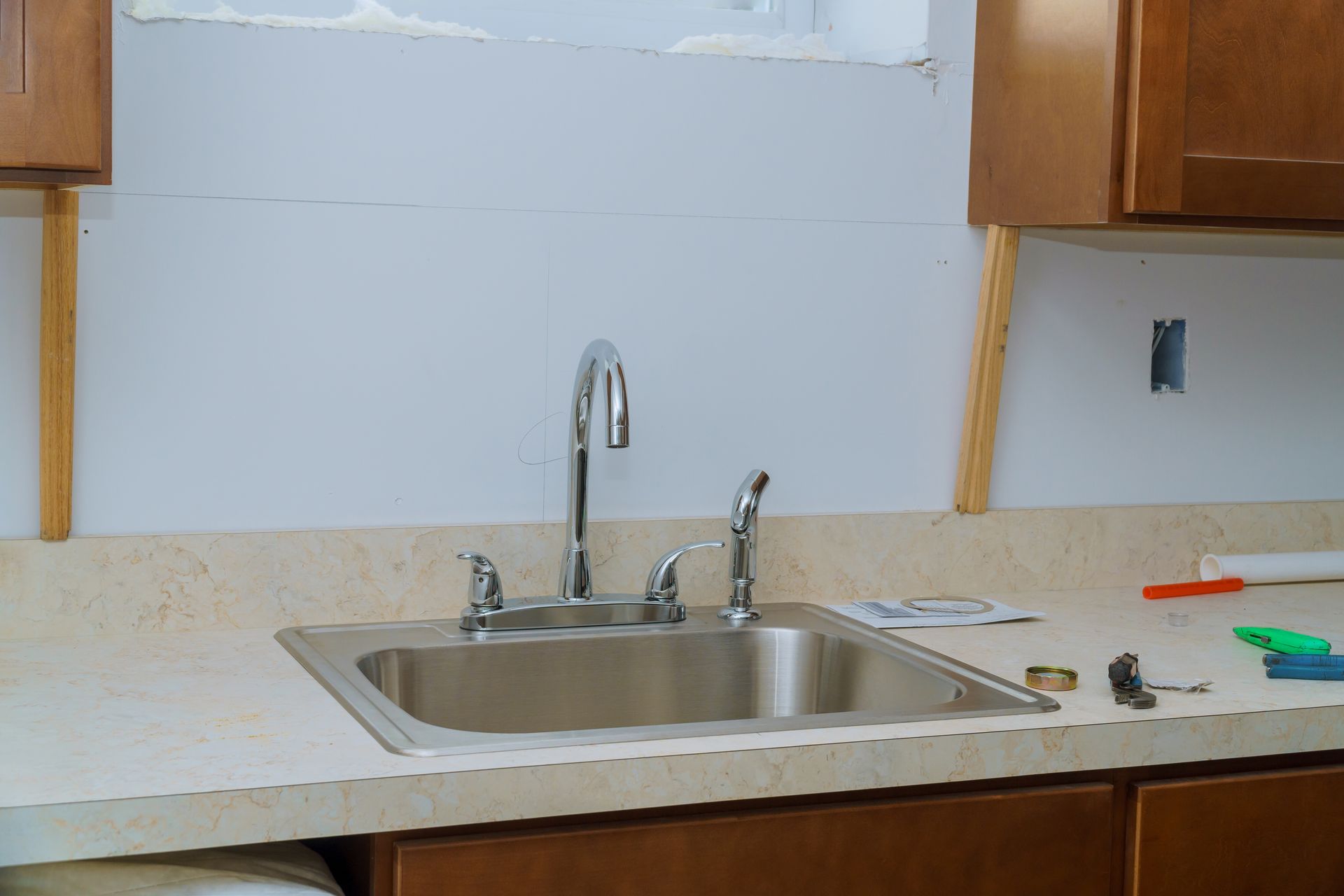 Working Hours : Mon-Fri (8.00 AM - 5.00 PM) and Sat (8.00 AM - 12.00 PM)
Working Hours : Mon-Fri (8.00 AM - 5.00 PM) and Sat (8.00 AM - 12.00 PM)
Blog
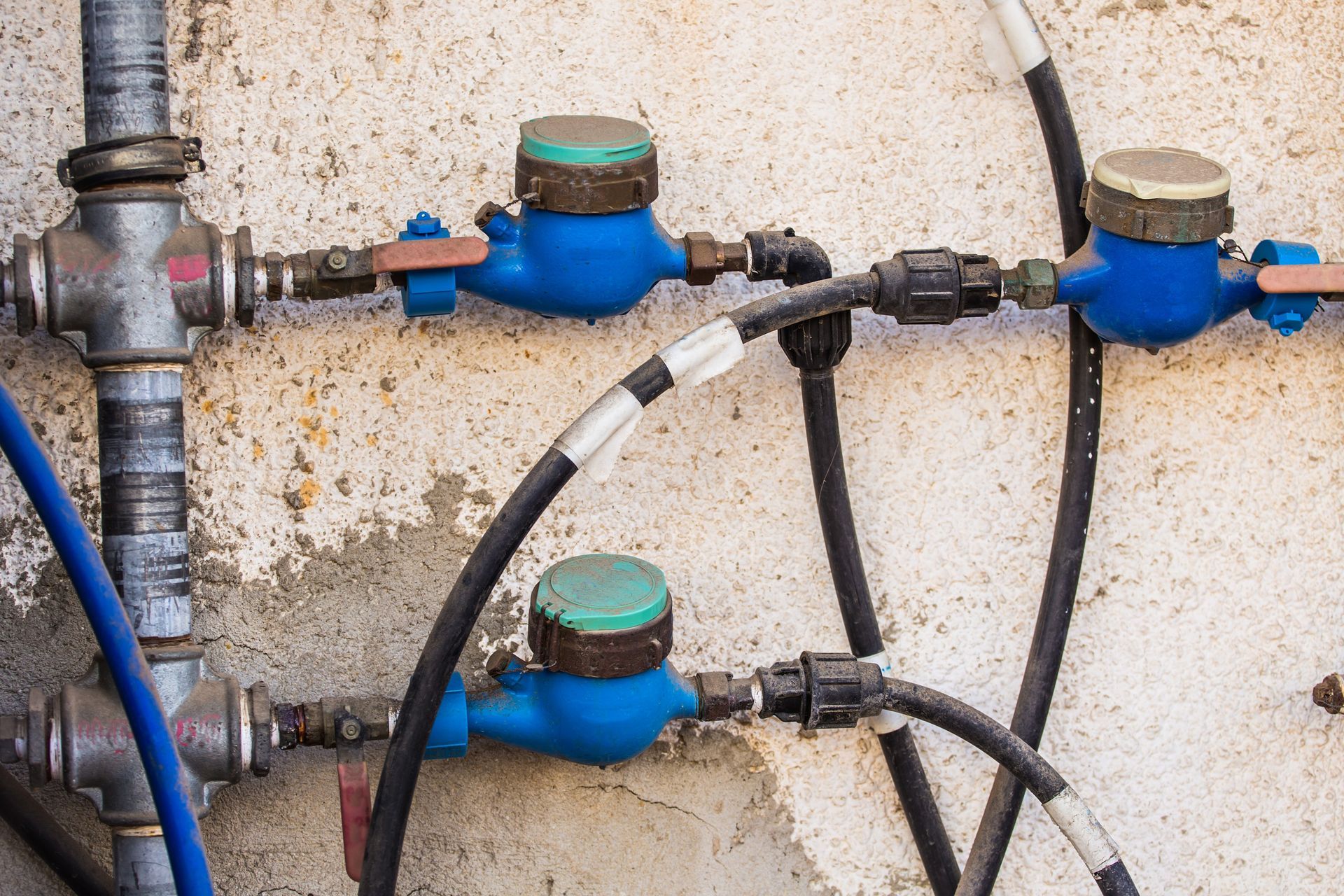
November 12, 2024
Most homeowners may not realize how quickly a small water leak can turn into a major problem. Identifying leaks early is imperative to prevent damage and costly repairs. In this easy-to-follow checklist, you will learn practical steps to detect water leaks in your home, from visual inspections to monitoring your water meter. Equip yourself with the knowledge to protect your property and maintain its value. Let’s dive in! Understanding Water Leaks Before you can effectively locate a water leak in your home, it’s important to understand what water leaks are. A water leak occurs when water escapes from pipes, fixtures, or appliances, leading to potential water damage, mold growth, and costly repairs if not addressed quickly. Detecting these leaks early on can save you significant time and financial resources. Types of Water Leaks Understanding the types of water leaks can help you identify where the issue may lie in your home. Here’s a quick overview: Pipe Leaks : Leaks from plumbing pipes, often hidden behind walls or under floors. Fixture Leaks : Leaks around faucets, toilets, and showerheads, typically due to worn seals. Appliance Leaks : Leaks from appliances like dishwashers or washing machines that can cause damage. Foundation Leaks : Water intrusion caused by poor drainage or damaged waterproofing in basements. Common Causes of Water Leaks Water leaks are often caused by various factors that degrade your plumbing system over time. Understanding the common causes can help you spot potential issues before they escalate: Old or corroded pipes can lead to bursts or leaks. Loose or damaged fittings can result in slow leaks over time. High water pressure can cause pipes to rupture or fittings to fail. Tree root intrusion can crack pipes, especially in older homes. Faulty appliances like dishwashers or washing machines can unexpectedly leak. Recognizing these causes allows you to act quickly and prevent significant water damage. The Importance of Early Detection For homeowners, early detection of water leaks can prevent extensive damage and costly repairs. By identifying leaks promptly, you can maintain your home's integrity and safeguard your financial investment. Even a small leak can lead to significant water damage over time, causing mold growth, structural issues, and higher water bills. Early detection is key to mitigating these risks. How to Find a Water Leak: Easy Checklist for Homeowners Finding a water leak doesn’t have to be daunting. Follow this easy checklist to stay aware of potential leaks in your home: 1. Check Your Water Meter Turn off all water appliances and check the meter. If it still runs, you may have a leak. A water meter is one of the most effective tools for detecting leaks early. Record the meter reading and wait a few hours; if the reading changes despite no water usage, you likely have a hidden leak. 2. Examine Indoor Pipes Look for signs of moisture, stains, or corrosion on exposed pipes. Dampness around pipes can indicate a slow leak. Pay attention to areas under sinks or in the basement where pipes are visible. 3. Inspect Appliances Check behind and beneath appliances like dishwashers, refrigerators, and washing machines for leaks and standing water. These appliances often leak without notice, especially when hoses or seals degrade. 4. Look for Wet Spots Inspect ceilings, walls, and floors for dampness, bubbling paint, or water stains. Wet spots on floors or walls may indicate a leak in the plumbing system or roof, which needs immediate attention. 5. Listen for Sounds Pay attention to unusual sounds like dripping or running water when all knobs are turned off. These sounds can help identify leaks in pipes, toilets, or behind walls. If you hear persistent dripping, it’s a clear indication of a leak. How to Identify Water Leaks Identifying water leaks early is key to avoiding major damage. Here's how to systematically check your home: Visual Inspections Regularly inspect your home for water stains, discoloration, or peeling paint on walls and ceilings. Look under sinks for any signs of moisture or mold, which are telltale signs of a leak. Listening for Signs Sometimes, simply listening for signs of water running or dripping can help you detect a hidden leak. Toilets can sometimes leak silently; listen for a faint hissing sound, which could indicate water escaping from the tank. Monitoring Your Water Meter Record the meter reading when all water sources are off. After a few hours, check the meter again; if the reading changes, it indicates a possible leak. Regularly monitoring your water meter can help you catch leaks early, preventing water waste and damage. How to Use Your Water Meter to Detect Leaks The water meter is one of the easiest and most effective ways to detect a water leak. By regularly checking your meter, you can identify unusual patterns in water usage and spot hidden leaks early. Turning Off All Water Sources Turn off all water sources in your home, including faucets, appliances, and irrigation systems. This ensures the meter is not recording any water usage during your test. Reading the Water Meter Take an initial reading from the water meter when no water is being used. After a few hours, check the meter again. If the reading has changed, you likely have a hidden leak somewhere in your plumbing system. Interpreting Changes Over Time Track any changes in the water meter readings over the next few days. A consistent increase in water usage without a corresponding change in household activities can point to a persistent leak. Final Checklist: How to Find a Water Leak Check for Visible Signs: Look for water stains, puddles, or peeling paint around walls, ceilings, and floors. Listen for Unusual Sounds: Pay attention to dripping sounds or the sound of running water when no fixtures are in use. Inspect Appliances: Regularly check underneath sinks and behind major appliances like dishwashers and refrigerators for leaks. Monitor Your Water Meter: Follow the steps above to read and interpret your water meter effectively. Perform a Toilet Test: Add a few drops of food coloring to your toilet tank and wait 15-20 minutes to see if the color appears in the bowl, indicating a leak. Check Outdoor Areas: Inspect your garden hoses, irrigation systems, and sprinkler heads for signs of leaks. Contact a Professional: If you suspect a hidden leak or can’t find the source of one, don’t hesitate to call Leak Detectors LLC for advanced assistance. By diligently following this checklist on how to find a water leak, you can detect issues early and prevent extensive damage to your home. Don’t wait until a small drip turns into a significant problem—take action today! If you suspect a leak or need professional help discovering hidden ones, reach out to Leak Detectors LLC . Our experienced team is ready to assist you in protecting your home from water damage.
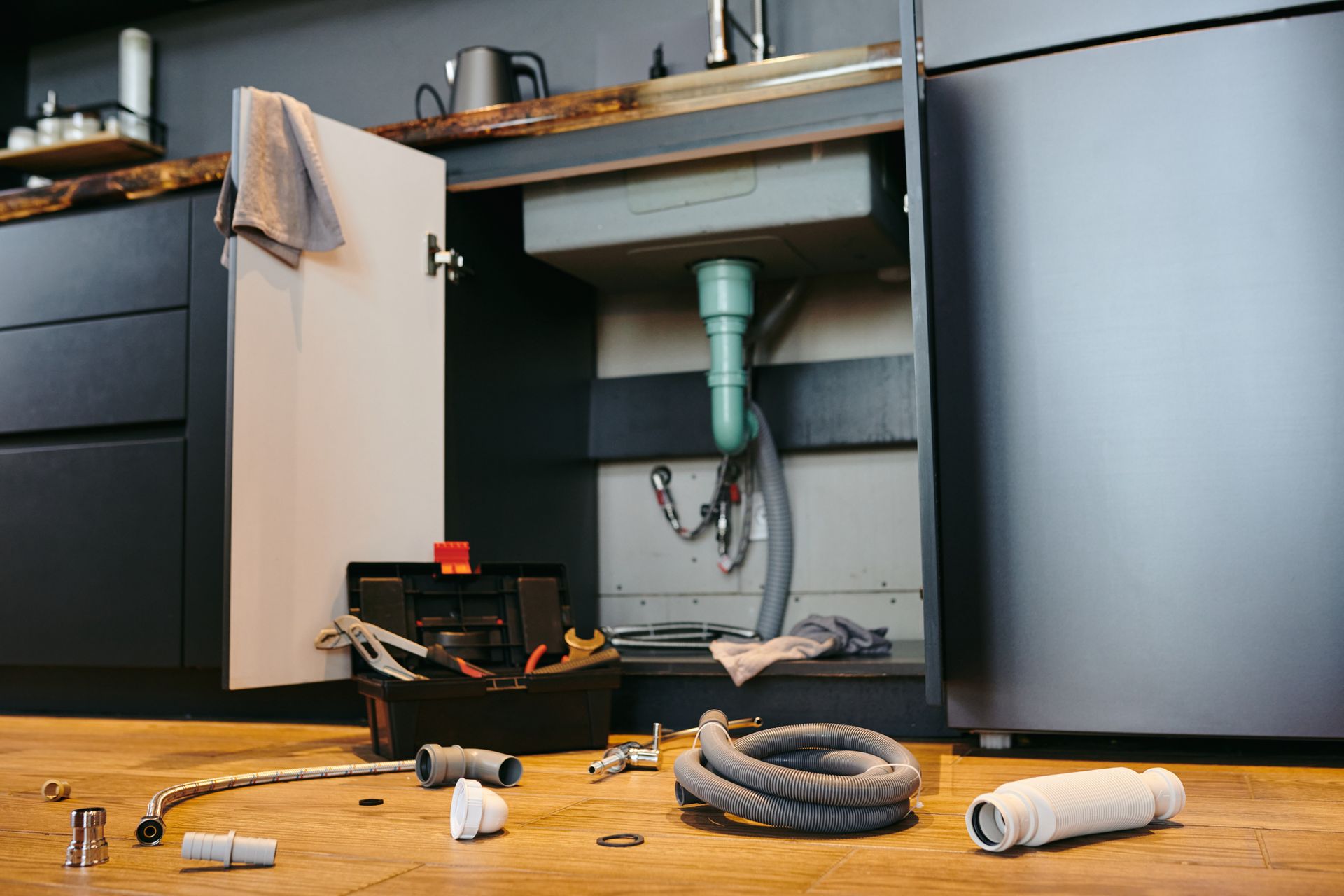
October 25, 2024
The presence of pipe leaks in your home can lead to significant water damage and costly repairs. Understanding the factors that contribute to these leaks is necessary for maintaining your plumbing system's integrity. Aging pipes, improper installations, and lack of maintenance are common causes. By recognizing the signs early, you can take proactive measures to prevent leaks, ensuring your plumbing remains in optimal condition and safeguarding your property from unnecessary damage. Types of Pipe Leaks There are several types of pipe leaks you may encounter, each with its unique challenges: Cracks: Occur due to pressure build-up or age. Corrosion: Metal pipes may corrode, leading to leaks. Joint Leaks: Often arise from improperly sealed joints. Pinholes: Small holes that form due to corrosion. Seepage: Gradual leaks that can go unnoticed for extended periods. Importance of Addressing Pipe Leaks Promptly Pipe leaks can lead to significant water damage if not addressed swiftly. By attending to leaks promptly, you can minimize repair costs and protect the structural integrity of your home. If water damage spreads, it can also lead to mold growth, a health hazard that can exacerbate respiratory issues. Indeed, timely action against pipe leaks contributes to maintaining your home’s value and ensuring a safe living environment. Ignoring these issues can escalate into larger, more expensive problems. You should routinely check for leaking pipes and seek professional inspections to identify weaknesses in your plumbing system. Common Causes of Pipe Leaks If you’re noticing unexplained moisture in your home, understanding the common causes of pipe leaks is crucial in preventing water damage. Aging pipes, improper installation, and external factors contribute significantly to leaks. By being aware of these causes, you can take proactive measures to protect your plumbing system, ensuring its long-term integrity and functionality. Aging Pipes On average, your plumbing has a lifespan that ranges from 20 to 100 years, depending on the material used. As pipes age, they can develop cracks or corrode, leading to leaks. Regular inspections and timely replacements are vital to curb the risks associated with older plumbing systems. Improper Installation Beside age, you may also find that the way your pipes were installed plays a significant role in leak development. Poor installation can lead to joint separation or stress on the pipes, making them more susceptible to leaks over time. To address improper installation, it’s important to ensure that any plumbing work done in your home follows local codes and guidelines. Hiring professional plumbers with solid reputations can prevent many issues. Additionally, regular monitoring of new installations can help you catch issues before they escalate. External Factors Corrosion, shifting soil, and extreme weather conditions are external factors that can jeopardize your plumbing. High humidity and temperature fluctuations can weaken pipes and joints over time. Taking preventive measures can mitigate risks significantly. Here are some factors to watch for: Soil erosion and movement surrounding your foundation Extreme weather, such as heavy rains or frost High humidity levels in certain areas of your home Any of these conditions can lead to unexpected leaks, making it crucial to assess your external environment regularly. Pipes can also be affected by external stressors, such as tree roots growing into the plumbing system or physical impacts from landscaping work. Keeping an eye on your landscaping and foundation can help prevent severe damage. Watch for these risk factors: Visible cracks in the foundation or walls Close proximity of tree roots to plumbing lines Recent excavation or construction work near your home Any signs of external stress should prompt immediate investigation to prevent future leaks. Preventive Measures to Protect Your Plumbing It is important to address potential risks in your plumbing system and put in place preventive measures to minimize the likelihood of pipe leaks. Regular inspections and maintenance are essential to keep your plumbing in good shape, particularly if you have old pipes or a history of faulty installation. By being proactive and taking simple measures, you can avoid the hassle and cost of water damage. Insulating Pipes After addressing potential problem areas, consider insulating your pipes, particularly those in unheated spaces like attics and basements. Proper insulation helps maintain the water temperature and reduce the risk of freezing in cold weather, preventing bursts that lead to leaks. Pipe insulation is an affordable and effective way to safeguard your plumbing system. Monitoring Water Usage After taking steps to insulate your pipes, monitoring your water usage is an effective preventative measure against leaks. Keep track of your water bills and pay attention to any sudden increases, which can indicate hidden leaks in your plumbing system. This practice enables you to address issues before they escalate into significant problems. And, by regularly checking your water meter, you can spot discrepancies that may suggest leaks. Turn off all water sources in your home for a couple of hours and then examine your meter's reading. If the number has changed, you likely have a leak that requires attention. By staying vigilant about your water consumption, you can take control of your plumbing's health. Understanding Your Plumbing System Around your home, familiarize yourself with the layout of your plumbing system. Knowing where your pipes run and their age can help you identify areas of concern that may be prone to leaks. It also enables you to communicate effectively with professionals when repairs or maintenance are needed. Smart use of tools, such as a home inspection camera, can reveal problem areas within your system that may not be visible to the naked eye. Understanding the materials used in your plumbing will guide you in making informed decisions regarding repairs, replacements, and upgrades, ultimately extending the lifespan of your plumbing infrastructure. What to Do If You Suspect a Leak Once again, if you suspect a leak in your home, it’s necessary to act swiftly to minimize potential damage. Begin by locating your water meter and monitoring it for changes; a rising meter even when no water is in use can indicate a leak. Check for signs of water accumulation, such as damp spots, mold growth, or unusual sounds in your pipes. Taking these preliminary steps will help you identify the issue and allow for prompt action, ensuring the integrity of your plumbing system. Immediate Steps to Take The first step you should take when you suspect a leak is to shut off your water supply. This will prevent further water damage while you assess the situation. Next, clear the area around potential leaks to minimize hazards and allow for better visibility. Examine your walls, floors, and ceilings for any visible signs of dampness, and keep an eye out for any unusual odors that could indicate mold growth. Consulting a Professional One of the best courses of action when faced with a suspected leak is to consult a professional plumber. They have the expertise and specialized equipment to accurately diagnose and locate leaks that may be hidden from view. This not only saves you time but also ensures that the repairs are done correctly and efficiently. What you may not realize is that professional plumbers use advanced tools, such as thermal imaging cameras and acoustic sensors, to detect leaks without invasive methods. This technology allows them to pinpoint issues with minimal disruption to your home. In addition, they can provide advice on preventive measures to reduce the risk of future leaks, drawing from their extensive experience in the field. Long-term Solutions After Repair Through regular maintenance and proactive measures, you can also ensure long-term effectiveness in preventing future leaks. After repairs are made, consider upgrading aging pipes or opting for high-quality materials that are less prone to wear and damage. Regular inspections will allow you to detect and address any issues before they escalate. This commitment to vigilance will pay off in the long run, reducing your risk of future plumbing issues. Building a relationship with a reputable plumber can also be beneficial, as they will know your plumbing history and provide tailored recommendations to keep your system in top shape. Prioritizing your plumbing’s longevity not only safeguards your home but also protects your investment. To Sum up Taking proactive steps to prevent pipe leaks in your home not only saves you time and money but also protects your peace of mind. By staying vigilant with your plumbing system conducting regular inspections, addressing wear and tear promptly, and understanding the common causes of leaks you empower yourself to create a safe and efficient living environment. Implement these simple yet effective tips today to safeguard your property from the damaging effects of water leaks. If you have any questions or need assistance, don’t hesitate to reach out to us at Leak Detectors LLC and we're here to help!
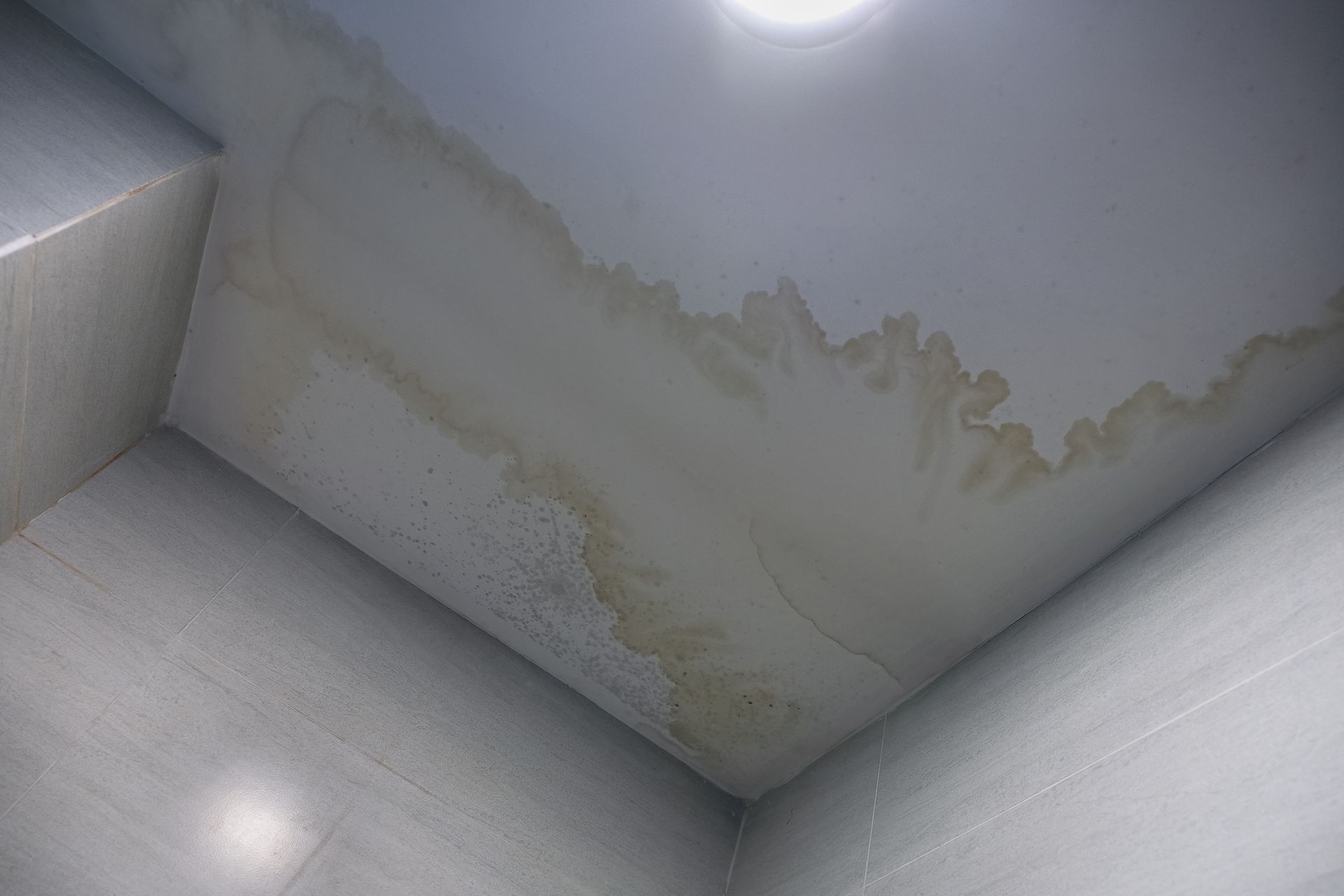
October 19, 2024
Roof leaks are a common issue that can cause significant damage to your home if not addressed promptly. Understanding the causes of roof leaks and implementing effective solutions is crucial for maintaining the integrity of your property and avoiding costly repairs. In this comprehensive guide, we will explore the most common causes of roof leaks and provide practical solutions to help you protect your home. A leaking roof can lead to a myriad of problems, from water damage and mold growth to structural weakening and increased utility bills. Identifying the root causes of roof leaks is the first step toward effective prevention and repair. This article delves into the primary reasons why roofs leak and offers actionable strategies to ensure your roof remains watertight and your home stays safe and dry. Key Takeaways Early Detection Reduces Repair Costs: Identifying leaks early prevents minor issues from escalating into major, financially burdensome repairs. Water Conservation Lowers Utility Bills: Addressing leaks promptly conserves water and decreases monthly expenses. Property Protection Enhances Value: Timely leak detection preserves your property's structural integrity, preventing costly damage and maintaining market value. Understanding Roof Leaks What Is a Roof Leak? A roof leak occurs when water infiltrates through cracks, gaps, or damaged areas in your roofing materials. This can lead to water damage inside your home, affecting ceilings, walls, and furnishings. Unlike visible leaks, roof leaks are often concealed, making them challenging to detect without thorough inspections. Common Causes of Roof Leaks Understanding the root causes of roof leaks is essential for effective prevention and maintenance. Here are the primary factors contributing to these issues: Aging Infrastructure: Old pipes made from materials like galvanized steel or cast iron are prone to corrosion and deterioration over time. As these materials degrade, they become brittle and more susceptible to cracks and breaks. High Water Pressure: Excessive pressure can strain pipes, joints, and fixtures, leading to leaks and bursts. High pressure accelerates the wear and tear of plumbing components, making them fail prematurely. Tree Root Intrusion: Tree roots naturally seek out moisture and can infiltrate pipes through small cracks or joints. Once inside, roots can cause blockages, break pipes, and create pathways for leaks to develop. Ground Shifting: Soil erosion, earthquakes, and construction activities can cause the ground to shift, exerting pressure on buried pipes. This movement can lead to misalignments, cracks, or complete pipe failures. Poor Installation Practices: Misaligned or improperly sealed pipes increase the risk of leaks. Inadequate support and insufficient sealing around joints can allow water to escape, especially under the stress of water pressure and environmental factors. Understanding these causes helps you implement preventive measures to protect your plumbing system from potential leaks. Financial Impact of Roof Leaks Hidden roof leaks may seem minor initially, but their financial implications can be substantial if not addressed promptly. Here's how these concealed leaks can affect your finances: Water Waste and Increased Utility Costs Even a small roof leak can waste thousands of gallons of water annually, directly translating to higher utility bills. According to the Environmental Protection Agency (EPA), the average household can waste nearly 10,000 gallons of water each year due to leaks. This excessive water loss not only strains your wallet but also puts unnecessary pressure on local water resources. Impact on Utility Bills: Unseen Consumption: Leaks often go unnoticed, leading to continuous water loss without any visible signs of usage. Spikes in Bills: Sudden and unexplained increases in water bills are a common indicator of hidden leaks. Financial Strain: Over time, the cumulative cost of wasted water can amount to significant savings lost. Property Damage and Structural Risks Hidden leaks can compromise your property's foundation, leading to structural damage such as sagging floors or, in extreme cases, collapse. Prolonged leaks can deteriorate building materials and promote mold growth, resulting in costly repairs and reduced property value. Types of Property Damage: Foundation Issues: Persistent moisture can weaken the foundation, causing cracks and instability. Wall and Floor Damage: Water seepage can lead to peeling paint, warped floors, and weakened walls. Mold and Mildew Growth: Constant moisture creates an ideal environment for mold, posing health risks and necessitating expensive remediation. Health Hazards and Environmental Impacts Leaks can lead to mold growth, posing health risks to your family, and contribute to environmental degradation by wasting water resources. Addressing leaks early protects both your health and the environment. Health Concerns: Respiratory Issues: Mold spores can cause allergies, asthma, and other respiratory problems. Structural Hazards: Compromised structures can lead to accidents and injuries within your home. Environmental Consequences: Water Scarcity: Wasted water contributes to the depletion of local water supplies. Ecosystem Disruption: Excessive water loss can affect surrounding vegetation and wildlife habitats. Effective Strategies for Preventing and Fixing Roof Leaks Addressing roof leaks promptly not only protects your home from structural damage but also helps conserve water and reduce your utility bills. Here are effective strategies to prevent and fix roof leaks: 1. Routine Roof Inspections Regular roof inspections are crucial for identifying and addressing potential issues before they lead to leaks. Schedule inspections at least twice a year and after severe weather events to ensure your roof remains in good condition. What to Look For During Inspections: Damaged or Missing Shingles: Look for cracked, curled, or missing shingles that can allow water to penetrate. Signs of Wear on Flashing: Inspect metal flashing around chimneys, vents, and skylights for rust, gaps, or loose fittings. Debris Buildup in Gutters: Ensure gutters are clear of leaves, twigs, and other debris to facilitate proper water drainage. Evidence of Water Stains or Moisture: Check ceilings, walls, and attic spaces for signs of water intrusion. 2. Timely Repairs Addressing roof issues promptly can prevent minor problems from escalating into major leaks. Whether it's replacing damaged shingles, repairing flashing, or cleaning gutters, timely maintenance is essential for keeping your roof leak-free. Types of Timely Repairs: Shingle Replacement: Replace cracked, curled, or missing shingles immediately to maintain a watertight barrier. Flashing Repair: Fix any gaps or corrosion in flashing to ensure a secure seal around roof penetrations. Gutter Cleaning: Remove debris from gutters regularly to prevent blockages and ensure proper water flow. 3. Proper Installation of Roofing Materials Ensuring that roofing materials are installed correctly is fundamental to preventing leaks. Poor installation can compromise the integrity of your roof, making it more susceptible to water intrusion. Best Practices for Roofing Installation: Hire Experienced Contractors: Choose licensed and reputable roofing professionals with a proven track record. Follow Manufacturer Guidelines: Adhere to the installation instructions provided by roofing material manufacturers to ensure optimal performance. Quality Materials: Invest in high-quality roofing materials that offer better durability and resistance to the elements. 4. Enhance Roof Ventilation and Insulation Proper ventilation and insulation help regulate attic temperatures and moisture levels, reducing the risk of leaks and prolonging the lifespan of your roofing materials. Steps to Enhance Ventilation and Insulation: Install Ventilation Fans: Ensure that your attic has adequate ventilation fans to promote airflow and prevent heat buildup. Upgrade Insulation: Add or replace attic insulation to maintain consistent temperatures and reduce moisture accumulation. Seal Air Leaks: Identify and seal any gaps or cracks in the attic to prevent warm, moist air from entering and causing condensation. 5. Use Waterproof Sealants and Coatings Applying waterproof sealants and coatings to vulnerable areas of your roof can provide an additional layer of protection against water intrusion. Areas to Apply Sealants and Coatings: Around Skylights and Chimneys: Seal the edges and seams to prevent water from seeping in. Roof Valleys: Apply sealants to roof valleys where water runoff is concentrated. Flashing and Seams: Ensure that all seams and flashing are thoroughly sealed to maintain a watertight barrier. Benefits of Waterproof Sealants: Enhanced Protection: Creates a seamless barrier that repels water. UV Protection: Shields roofing materials from ultraviolet rays, preventing degradation. Energy Efficiency: Reflective coatings can reduce heat absorption, lowering cooling costs. 6. Install Gutter Guards Gutter guards can prevent debris from clogging your gutters, ensuring that water flows freely away from your roof and foundation. Advantages of Gutter Guards: Reduced Maintenance: Minimizes the need for frequent gutter cleaning by keeping out leaves and debris. Prevention of Water Overflow: Ensures that gutters can handle heavy rainfall without overflowing, reducing the risk of leaks. Protection Against Pest Infestations: Keeps pests like birds and rodents from nesting in clogged gutters. Types of Gutter Guards: Mesh Guards: Fine mesh screens that block debris while allowing water to pass through. Reverse Curve Guards: Designed to direct water into the gutter while keeping debris out. Bottle Brush Guards: Contain bristles that trap debris without impeding water flow. 7. Professional Leak Detection and Repair In cases where leaks are difficult to locate or repair, hiring a professional roofing contractor is the most effective solution. Professionals have the expertise and specialized tools to accurately identify and fix roof leaks without causing additional damage. Advantages of Professional Services: Accurate Diagnosis: Professionals can pinpoint the exact location and cause of leaks using advanced technologies like infrared cameras and acoustic sensors. Comprehensive Repairs: Ensure that all affected areas are properly repaired to prevent future leaks. Long-Term Solutions: Provide durable repairs that extend the lifespan of your roof, saving you money in the long run. To SuM Up Understanding the common causes of roof leaks is essential for maintaining the integrity of your home and avoiding costly repairs. From aging materials and damaged shingles to faulty flashing and poor ventilation, there are numerous factors that can contribute to water intrusion in your roof. By implementing regular inspections, performing timely repairs, and utilizing effective preventive measures, you can safeguard your property against the detrimental effects of roof leaks. Addressing roof leaks promptly not only protects your home from structural damage but also helps conserve water and reduce your utility bills. Whether you choose to handle minor repairs yourself or enlist the expertise of professional leak detection services, taking proactive steps is crucial for ensuring a leak-free and durable roofing system. Don’t let roof leaks drain your finances and damage your property. Taking proactive measures today can save you thousands in repair costs and preserve the value and integrity of your home. For comprehensive leak detection and repair services, contact Leak Detectors LLC .

October 11, 2024
You may not realize it, but hidden water leaks beneath your property can silently wreak havoc on both your finances and the structural integrity of your home. Detecting these leaks early is essential to avoid skyrocketing utility bills and expensive repairs. These concealed leaks contribute to water wastage and potential damage to your property, making it crucial to be proactive in identifying and resolving them. In this post, we’ll explore how early detection can benefit you financially, the factors leading to these leaks, and strategies to ensure your plumbing system remains efficient and leak-free. Key Takeaways Early Detection Reduces Repair Costs: Identifying leaks early prevents minor issues from escalating into major, financially burdensome repairs. Water Conservation Lowers Utility Bills: Addressing leaks promptly conserves water and decreases monthly expenses. Property Protection Enhances Value: Timely leak detection preserves your property's structural integrity, preventing costly damage and maintaining market value. Understanding Hidden Water Leaks What Are Hidden Water Leaks? Hidden water leaks occur when water escapes from pipes buried beneath the surface of your property. These leaks can originate from various sources, including water supply lines, sewer systems, irrigation setups, and drainage networks. Unlike visible leaks, these issues are concealed, making them challenging to identify without specialized equipment. Characteristics of Hidden Leaks: Subsurface Location: Typically found beneath driveways, sidewalks, gardens, or lawns. Gradual Detection: Often discovered through indirect signs rather than visible water flow. Potential for Extensive Damage: Can affect large areas of property over time if left undetected. Common Causes of Hidden Water Leaks Understanding the root causes of these elusive leaks is crucial for effective prevention and maintenance. Here are the primary factors contributing to these concealed issues: Aging Infrastructure: Old pipes made from materials like galvanized steel or cast iron are prone to corrosion and deterioration over time. As these materials degrade, they become brittle and more susceptible to cracks and breaks. High Water Pressure: Excessive pressure can strain pipes, joints, and fixtures, leading to leaks and bursts. High pressure accelerates the wear and tear of plumbing components, making them fail prematurely. Tree Root Intrusion: Tree roots naturally seek out moisture and can infiltrate pipes through small cracks or joints. Once inside, roots can cause blockages, break pipes, and create pathways for leaks to develop. Ground Shifting: Soil erosion, earthquakes, and construction activities can cause the ground to shift, exerting pressure on buried pipes. This movement can lead to misalignments, cracks, or complete pipe failures. Poor Installation Practices: Misaligned or improperly sealed pipes increase the risk of leaks. Inadequate support and insufficient sealing around joints can allow water to escape, especially under the stress of water pressure and environmental factors. Understanding these causes helps you implement preventive measures to protect your plumbing system from potential leaks. Financial Impact of Hidden Water Leaks Hidden water leaks may seem minor initially, but their financial implications can be substantial if not addressed promptly. Here's how these concealed leaks can affect your finances: Water Waste and Increased Utility Costs Even a small hidden leak can waste thousands of gallons of water annually, directly translating to higher utility bills. According to the Environmental Protection Agency (EPA), the average household can waste nearly 10,000 gallons of water each year due to leaks. This excessive water loss not only strains your wallet but also puts unnecessary pressure on local water resources. Impact on Utility Bills: Unseen Consumption: Leaks often go unnoticed, leading to continuous water loss without any visible signs of usage. Spikes in Bills: Sudden and unexplained increases in water bills are a common indicator of hidden leaks. Financial Strain: Over time, the cumulative cost of wasted water can amount to significant savings lost. Property Damage and Structural Risks Hidden leaks can compromise your property's foundation, leading to structural damage such as sagging floors or, in extreme cases, collapse. Prolonged leaks can deteriorate building materials and promote mold growth, resulting in costly repairs and reduced property value. Types of Property Damage: Foundation Issues: Persistent moisture can weaken the foundation, causing cracks and instability. Wall and Floor Damage: Water seepage can lead to peeling paint, warped floors, and weakened walls. Mold and Mildew Growth: Constant moisture creates an ideal environment for mold, posing health risks and necessitating expensive remediation. Health Hazards and Environmental Impacts Leaks can lead to mold growth, posing health risks to your family, and contribute to environmental degradation by wasting water resources. Addressing leaks early protects both your health and the environment. Health Concerns: Respiratory Issues: Mold spores can cause allergies, asthma, and other respiratory problems. Structural Hazards: Compromised structures can lead to accidents and injuries within your home. Environmental Consequences: Water Scarcity: Wasted water contributes to the depletion of local water supplies. Ecosystem Disruption: Excessive water loss can affect surrounding vegetation and wildlife habitats. DIY Methods for Leak Detection While hidden water leaks are challenging to detect, there are several Do-It-Yourself (DIY) methods you can employ to identify potential leaks before they escalate into costly repairs. Being proactive and utilizing simple tools and techniques can help you monitor your water usage and detect leaks early on. Regular Inspections and Monitoring 1. Water Meter Checks: Regularly checking your water meter is one of the simplest ways to detect leaks. Here's how to do it: Initial Reading: Note the current reading on your water meter. Non-Usage Period: Avoid using any water in your home for a few hours (preferably overnight). Second Reading: Check the meter again after the period of non-usage. Compare Readings: If the meter has moved, it indicates that water is being used somewhere in your system, suggesting a possible leak. 2. Visual Inspections: Conduct regular visual inspections of areas where buried pipes are likely to be located, such as: Yard and Garden: Look for unusually wet spots, puddles, or areas with overly lush vegetation. Foundation Perimeter: Inspect around your home's foundation for signs of moisture or soil erosion. Driveways and Walkways: Check for cracks or sinkholes that may indicate pipe damage beneath the surface. 3. Auditory Signs: Listening for unusual sounds can also help in identifying leaks: Running Water: The sound of water running when all fixtures are off is a clear indicator of a leak. Hissing or Bubbling: These sounds may suggest pressurized leaks within the plumbing system. Basic Tools for Homeowners Equipping yourself with the right tools can enhance your ability to detect leaks early: Water Meter: Essential for tracking water usage and identifying anomalies. Moisture Meter or Thermal Imaging Camera: Helps detect hidden moisture and temperature changes indicative of leaks behind walls or underground. Flashlight: Useful for inspecting dark or hard-to-reach areas around your property. Leak Detection Apps: Some smart home systems offer apps that monitor water usage in real-time and alert you to potential leaks. Step-by-Step Leak Detection Guide Follow this structured approach to identify potential hidden leaks: Check Your Water Meter: Note the current meter reading, refrain from using water for a few hours, and check again. A change indicates a possible leak. Inspect Outdoor Areas: Look for unusual wet spots, pools of water, or overly lush vegetation. Monitor Soil Moisture: Check around the foundation for dampness or erosion. Listen for Water Sounds: Pay attention to any unusual sounds of water running when fixtures are off. Evaluate Plant Growth: Excessive greenery in specific areas may indicate water seepage due to a hidden leak. By following these steps, you can identify potential leaks early and take action before they cause significant damage. When to Call a Professional If you cannot locate a leak using DIY methods, or if you suspect a significant issue, it's time to call a professional plumber. Expert leak detection requires specialized equipment and knowledge to accurately identify and repair leaks without causing additional damage. Professionals can perform thorough inspections using advanced technologies like infrared cameras and acoustic sensors, ensuring that leaks are detected and addressed efficiently. Wrapping Up Early detection of hidden water leaks is a financially savvy strategy that offers numerous benefits, including substantial cost savings, prevention of property damage, and enhanced water efficiency. By implementing regular inspections, monitoring water usage, and utilizing advanced detection technologies, homeowners can safeguard their properties against the concealed threats of buried leaks. Don’t let hidden leaks drain your finances and damage your property. Taking proactive measures today can save you thousands in repair costs and preserve the value and integrity of your home. For comprehensive leak detection and repair services, contact Leak Detectors LLC . .
Trust our expert team for reliable water leak detection in the Santa Teresa, NM area, including El Paso, TX, Las Cruces, NM, and Sunland Park, NM. At Leak Detectors, we are your go-to leak detection company for precise and efficient solutions. Whether you're searching for wall leakage or need advanced slab leak detection, we have the tools and expertise to handle it all.
Quick Links
Our Services
Copyright © 2024 Leak Detectors LLC



